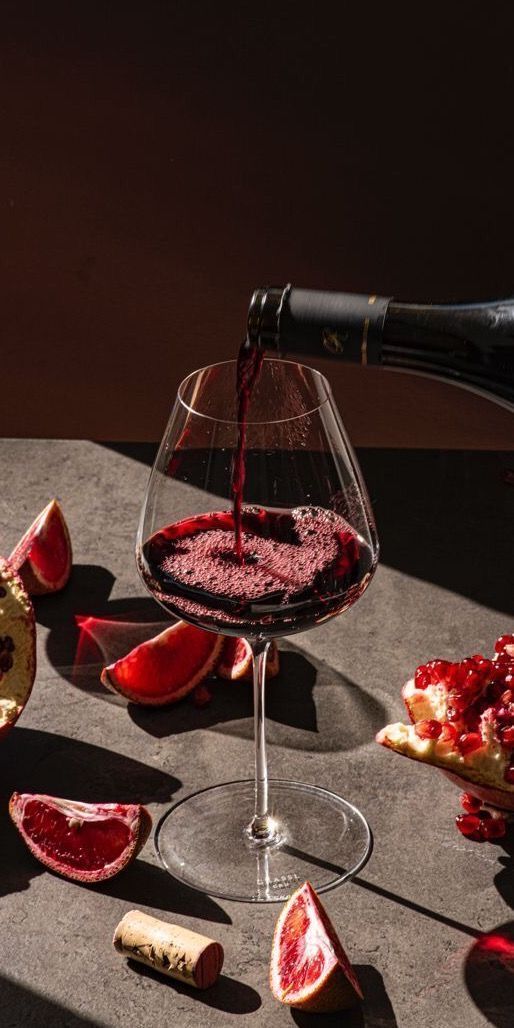The first time you try wine, it’s rarely love at first sip.
Maybe it was a wedding toast with something that tasted vaguely like bitter grapes and regret. Or a sneaky sip from your parents’ bottle, poured into a mug or straight from the neck, that left you wondering why adults made such a fuss.
And then there are the rest of us, introduced through the cheapest bottle we could afford in school, the kind of wine that stains your lips, your teeth, and probably your dignity.
And God knows we couldn’t wait to try it. Maybe it was Olivia Pope swirling a giant glass of red on Scandal and making power look intoxicating. Or Carrie Bradshaw clinking rosé with her friends on Sex and the City, making you think, whatever she’s having, I want it.
Wine is dramatic like that: part drink, part performance. And for all its centuries of history, it’s also just… fermented grapes. Which means it doesn’t need to be as intimidating as it’s often made out to be. You don’t need a trust fund, a vineyard visit, or a sommelier diploma to enjoy it. You just need curiosity and maybe a corkscrew.
Welcome to the girl’s guide to getting into wine. No gatekeeping, no nose-in-the-air sommeliers, just the joy of discovering what you actually like. Because at the end of the day, wine isn’t about rules.
It’s about finding the right bottle that makes you smile and roll your head back in pleasure after the first sip.
The Big Four: Red, White, Rosé, and Sparkling
Wine can be divided into four broad categories: red, white, rosé, and sparkling. That’s your starting lineup, and within each category, there are flavours, moods, and personalities.
Red Wine
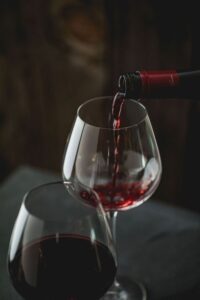
Red is the drama queen of the wine world. Bold, moody, occasionally overwhelming. What makes red wine distinct is something called tannins. Tannins come from grape skins, and they’re what make your mouth feel a little dry or puckered after a sip. Think of tannins as lipstick that stays put even after three cocktails; some people love it, some find it annoying. There are three types of red wine:
- Cabernet Sauvignon: The boss. Dark, powerful, often tastes like blackcurrant, plum, and a bit of leather (yes, leather).
- Merlot: Softer, easier to drink, a “starter red.” Smooth, fruit-forward, like that friend who’s always easy company.
- Pinot Noir: The delicate one. Light, elegant, silky. Perfect for people who find big reds too much.
Red wines are often described as “full-bodied” or “light-bodied.”
Translation: how heavy it feels in your mouth. A full-bodied red is like wearing a faux-fur coat. A light-bodied one is like slipping into silk.
White Wine
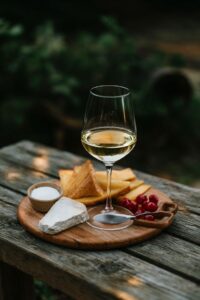
White is the effortless cool girl. Crisp, refreshing, the one that shows up to brunch with sunglasses and leaves without a hangover. White wines don’t have tannins because they’re made without grape skins, which makes them less drying and more approachable for beginners.
- Sauvignon Blanc: Fresh, zesty, citrusy. Imagine sipping it while gossiping on a balcony.\
- Chardonnay: The shapeshifter. It can be crisp and mineral, or rich and buttery. If you’ve ever heard “oaky Chardonnay,” that means it’s aged in oak barrels, giving it that warm, creamy vibe.
- Riesling: Can be sweet or dry, but often has a floral, aromatic personality. Great gateway wine if you’re new.
White wines are your warm-day, cold-glass besties. They’re perfect when you don’t want to think too hard, just sip and enjoy.
Rosé Wine
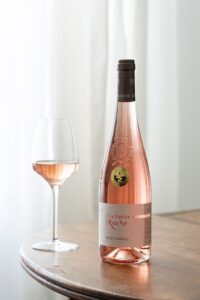
Ah, rosé. The Instagram darling. Summer in a glass. Loved by brunch tables, beach days, and anyone who appreciates a drink that looks as good as it tastes. But don’t dismiss it as “basic.” Good rosé can be nuanced, crisp, and deeply satisfying.
- Provence Rosé (France): The gold standard. Dry, pale pink, subtle.
- White Zinfandel (US): Often sweeter, fruitier, and very beginner-friendly.
Rosé sits between red and white, literally and metaphorically. It’s playful, social, and less intimidating than either extreme.
Sparkling Wine
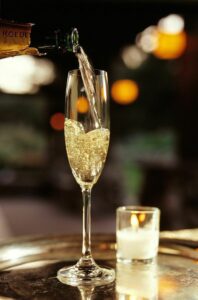
Sparkling wine is the extrovert of the wine world. Sexy, luxurious, impossible to ignore, and always dressed for a party. Every sip, every bubble, feels like dipping your toes in the ocean on a hot day.
- Champagne (France): The icon. Always from the Champagne region, always glamorous, always a little expensive.
- Prosecco (Italy): Light, fruity, and wallet-friendly. Your go-to for casual celebrations.
- Cava (Spain): Crisp, zesty, and often underrated. Great value without sacrificing taste.
- Sparkling Rosé: Like regular rosé, but with bubbles, festive and flirty.
Why sparkling is different from rosé: rosé describes the colour and still style produced by brief skin contact; sparkling describes the presence of bubbles from a secondary fermentation. A sparkling rosé is simply rosé with bubbles, so it belongs in the sparkling family, not as a subtype of still rosé.
Beyond the Big Four: Fortified & Dessert Wines
Beyond the reds, whites, rosés, and bubbles you already know, there’s an entire cast of bottles with their own traditions, rituals, and flavours.
Fortified Wines
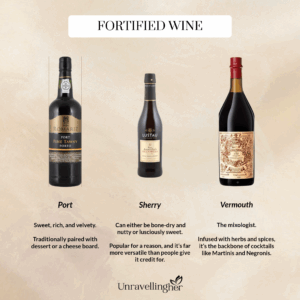
Once you’ve met the big four, you’ll probably start spotting other mysterious bottles on shelves or menus, such as Port, Sherry, and Vermouth. These fall under the family of fortified wines, which simply means that a distilled spirit (usually brandy) has been added to the wine. That little boost makes them stronger, richer, and often sweeter. They’re not your everyday sippers, but they’re the secret handshake of wine culture.
Port (Portugal)
Sweet, rich, and velvety. Traditionally paired with dessert or a cheese board, Port is like the friend who always shows up overdressed but still manages to win everyone over.
Sherry (Spain)
One of the most misunderstood wines. Sherry can be bone-dry and nutty or lusciously sweet. It has a cult following for a reason, and it’s far more versatile than people give it credit for.
Vermouth
A fortified wine infused with herbs and spices, best known as the backbone of cocktails like martinis and Negronis. Think of Vermouth as the mixologist of the wine family, a little mysterious, a little bitter, and very necessary.
Dessert Wines
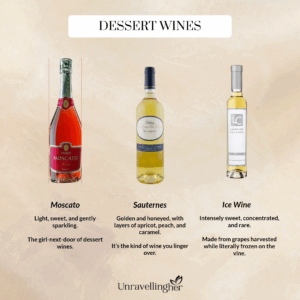
And then there are wines that are unapologetically sweet. Dessert wines aren’t just for after dinner, though they do shine with sweets, and they’re also perfect for sipping slowly when you want something indulgent.
Moscato
Light, sweet, and gently sparkling. The girl-next-door of dessert wines that says easy, approachable, and universally liked.
Sauternes (France)
Golden and honeyed, with layers of apricot, peach, and caramel. It’s luxury in a glass and the kind of wine you linger over.
Ice Wine
Made from grapes harvested while literally frozen on the vine. Intensely sweet, concentrated, and rare. Every sip feels like liquid gold.
Sweet vs. Dry Wine And Why It Matters
When wine people say “dry,” they mean “not sweet.” A dry wine has little to no residual sugar left after fermentation. A sweet wine has more sugar, which makes it taste, well, sweeter.
If you love Coca-Cola, flavoured lattes, or desserts, you’ll probably enjoy sweeter wines. If you prefer black coffee, dark chocolate, or sparkling water, you might lean toward dry. Most people start with sweet and move toward drier as their palate evolves, though no rule says you have to “graduate.”
Think of it like music taste: some people stay loyal to pop bangers forever, others end up in jazz or soul. Neither is better. It’s about what you actually like.
How to Drink Wine Without Feeling Like a Fraud
Here’s the secret: even experts are mostly faking it. All the swirling, sniffing, and slurping? It’s just a way to slow down and notice.
- Look: Hold your glass up by the stem. Red, white, or pink, congratulations, you’ve completed step one.
- Swirl: Gently move the glass in circles. This releases aromas. Also looks cool.
- Sniff: Put your nose in and inhale. If you smell “wine,” that’s fine if you smell strawberries, vanilla, or old library books, even better.
- Sip: Take a small sip, let it sit on your tongue. Swallow. Repeat.
You don’t have to say things like “tangy, with hints of tobacco and complex tannins.” You can say, “This tastes like a good time.” That works too.
How To Pair Wine Like A Pro
Want to impress at the dinner table? Here are the classic rules everyone quotes:
- Red wine with red meat.
- White wine with fish or chicken.
- Rosé with brunch.
Simple, right? But here’s the truth: drink what you like with whatever you want. With meals like pizza, it’s foolproof; every wine works. For spicy food, slightly sweet wines are your best bet because they cut through the heat. And when it comes to Champagne or sparkling wine, pair it with anything salty and you’ve got perfection.
Pairing wine is a lot like fashion. Sure, there are rules, but sometimes sneakers with a dress just work.
Wine Shopping With a Budget
One of the biggest myths in wine is that the higher the price, the better the bottle. Not true. Great wines can be found for $10–$20 (₦10,000–₦20,000 depending on your market), and sometimes even less.
Here’s how to sip smart without draining your account. Start by looking beyond the obvious regions. Everyone knows French Bordeaux and Italian Chianti, but Portuguese reds, South African Chenin Blanc, or even Moldovan wines can be just as good for a fraction of the price. And don’t turn your nose up at boxed wine. Many brands have stepped up their game, and the bonus is that it stays fresh far longer than an open bottle.
The real trick is knowing when to splurge. If you’re celebrating, by all means, go for a good rosé or Champagne. But if it’s just a Tuesday Netflix night, there’s absolutely no shame in grabbing the ₦4,500 bottle. And here’s a pro tip that has changed my wine shopping: read the label. If a wine comes with a thoughtful story about the vineyard, the soil, or the family behind it, there’s a higher chance it will actually deliver on taste.
Your Glass, Your Rules
Wine is rarely just about the liquid. It’s about the ritual. Wine nights with friends, a solo glass after work, a shared bottle on a date. It’s about clinking glasses and saying “cheers,” a tiny ceremony that makes ordinary evenings feel special.
The best bottle isn’t the most expensive or the most awarded. It’s the one you actually enjoy drinking.
So whether you’re sipping a sweet rosé with your best friends, nervously swirling your first Cabernet at a dinner party, or pouring a glass of supermarket Sauvignon Blanc into your favourite mug, remember this: you don’t need permission to like what you like.
Cheers.

